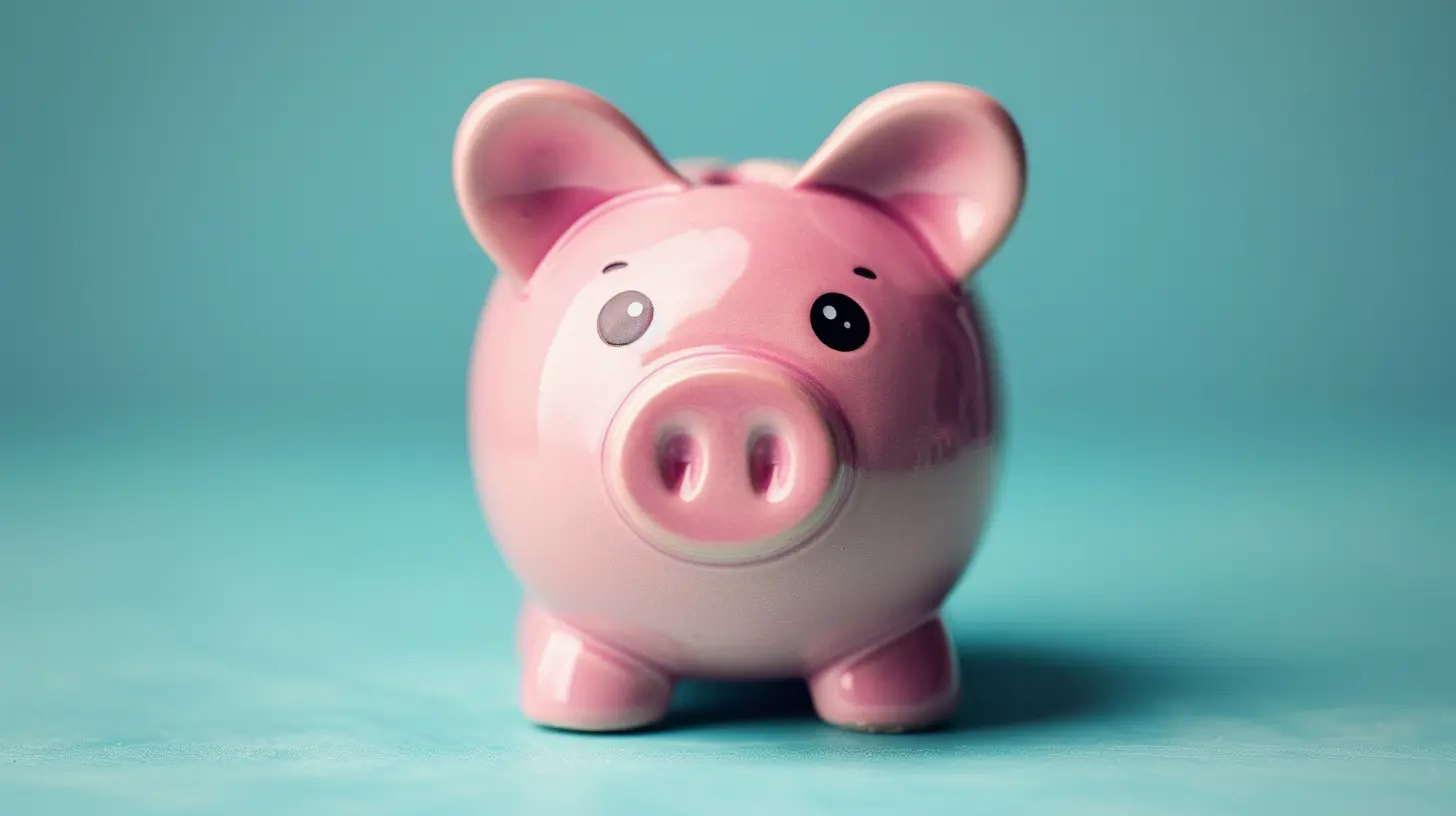How to Harness Compound Interest for Your Emergency Fund
7 July 2025
We all know we should have an emergency fund—right? But how many of us actually take the time to make our savings work for us while they’re just sitting there, waiting for a rainy day?
If you've ever felt like your emergency fund is more like a financial paperweight than a thriving money-making machine, you're not alone. The good news? There’s a little financial trick that can give your emergency fund a major boost without you lifting a finger (after the initial setup, of course). And that superhero is called compound interest.
In this article, we’re going to break down exactly how you can harness compound interest for your emergency fund—and why it’s a total game-changer.
What Is Compound Interest Anyway?
Let’s start with the basics. You’ve probably heard the term “compound interest” thrown around a lot, especially in relation to credit cards or investments. But in simple terms?> Compound interest is when the interest you earn on your money starts earning interest itself.
Think of it like a snowball rolling down a hill. At first, it’s tiny. But as it rolls, it picks up more snow—and more speed. Similarly, when you leave your money (and the interest it earns) in an account that compounds, it begins to grow faster and faster all on its own. Magic? Not quite. But it is math working in your favor.
Why Use Compound Interest For Your Emergency Fund?
You might be thinking, “Isn’t an emergency fund supposed to just sit safely in a savings account?” Sure, safety is the priority. But that doesn’t mean your money has to sit there like a couch potato. You can give it a little workout—even while keeping it accessible.Here’s why compound interest is perfect for your emergency fund:
- It builds your savings faster —without extra effort.
- It helps offset inflation —keeping your money from losing value over time.
- It creates a psychological boost —seeing your money grow can motivate you to save more.
Sounds good, right?
How Compound Interest Works in Real Life
Let’s say you tuck away $5,000 into a high-yield savings account with a 4% annual interest rate, compounded monthly.After one year, with monthly compounding, your balance grows to around $5,204.16. Not earth-shattering, but it’s not doing nothing either. Fast forward 5 years (no additional deposits), and that same $5,000 becomes approximately $6,082. That’s over $1,000 earned just by letting your emergency fund chill in the right spot.
And if you keep adding to it regularly? The growth snowballs even faster.
Choosing the Right Spot for Your Emergency Fund
Not all savings accounts are created equal. If you’re stashing your emergency fund in a traditional savings account earning 0.01% interest... ouch. You’re leaving money on the table.Here are some great places to store your emergency fund and tap into the power of compound interest:
1. High-Yield Savings Account (HYSA)
These accounts are your best friend when it comes to combining safety, accessibility, and decent returns. Offered by online banks or credit unions, HYSAs often offer interest rates between 3.5%–5% APY (Annual Percentage Yield).Why they’re great:
- FDIC insured (up to $250,000)
- No or low fees
- Easy to access in emergencies
- Compound interest typically calculated daily, paid monthly
2. Certificates of Deposit (CDs)
CDs offer higher interest rates than standard savings accounts, but come with a catch—you’ve got to leave the money untouched for a set term (6 months to 5 years). Withdraw early? You’ll pay a penalty.Why they’re great (with limits):
- Higher interest rates
- Ideal for a tiered emergency fund strategy
- Less temptation to dip into funds unnecessarily
3. Money Market Accounts (MMAs)
These are a blend between savings and checking accounts. They offer decent interest rates and often come with check-writing privileges or debit cards.Why they’re great:
- Higher yields than regular savings
- Limited access for added security
- FDIC insured
Pro Tips to Maximize Compound Interest on Emergency Funds
Want your emergency fund to reach its full potential? Don’t just let it sit—make smart moves.1. Start Early, Even If It’s Small
The earlier you start compounding, the more time your money has to grow. Even $20 a week adds up. Compound interest rewards time more than amounts.>Think of it like planting a tiny tree. It might start small, but it grows into a mighty oak with time.
2. Separate Your Emergency Fund from Your Regular Accounts
Out of sight, out of mind. If you separate your emergency fund, you’re less likely to touch it for non-emergencies. Plus, this setup lets interest work uninterrupted.3. Reinvest the Interest
Always let the interest stay in the account and compound. If you pull it out or transfer it elsewhere, you're defeating the purpose.4. Automate Contributions
Set it and forget it. Automate weekly or monthly transfers to your emergency fund. You’ll barely notice the money leaving your account, but your emergency fund will notice the growth.5. Use a Tiered Strategy
Combine different accounts for greater flexibility and higher returns:- Tier 1: Immediate-access money in a high-yield savings account (1 month of expenses)
- Tier 2: Higher-yield CD or money market account (2–5 months of expenses)
- Tier 3: Possibly conservative investment options or longer-term CDs (for rare, big emergencies)
It’s like building a financial layer-cake. Sweet, stable, and ready to serve when life throws a curveball.
Common Pitfalls to Avoid
Even the best plans can go sideways if you’re not careful. Here are a few things to steer clear of:❌ Using a Low-Interest Traditional Savings Account
Let’s be real—0.01% interest is basically the financial equivalent of watching paint dry. Don’t do it to your emergency fund.❌ Tying Up Emergency Money in Risky Investments
Remember, this fund is for emergencies. That means it needs to be stable and accessible. Avoid stocks or volatile assets.❌ Dipping into It for Non-Emergencies
That vacation to Bali is not an emergency (however tempting it might feel). Keep your emergency fund sacred—and separate.❌ Forgetting to Reassess Interest Rates
Interest rates change. If your HYSA drops its APY, consider moving to one offering more competitive returns.How Much Should You Keep in Your Emergency Fund?
Good question. The general rule of thumb is 3 to 6 months’ worth of living expenses. But that number isn’t set in stone.Ask yourself:
- What’s your job stability like?
- Do you have dependents?
- Are your monthly expenses high or low?
If you’re single with low expenses, 3 months might do. If you’re a parent with a mortgage? Better shoot for 6+ months.
Can You Really “Grow” Your Way to Financial Peace?
Absolutely.It might sound like a stretch—growing wealth from an account meant for life’s "what-ifs." But if you let compound interest do its thing, your emergency fund becomes both your safety net and your silent savings partner.
It’s like having your cake and eating it too.
Final Thoughts
Your emergency fund isn't just a stagnant pile of cash—unless you let it be. By putting it in the right account and harnessing the quiet power of compound interest, you're turning a passive safety net into a growing asset.Don’t overthink it. Start small, stay consistent, and give it time. Before you know it, you'll not only have peace of mind—but a plump, interest-fattened emergency fund to back it up.
So what are you waiting for? Give your emergency fund a little turbo boost.
all images in this post were generated using AI tools
Category:
Compound InterestAuthor:

Eric McGuffey
Discussion
rate this article
1 comments
Jenna Hall
Ah, compound interest for an emergency fund! Because nothing says 'I love financial security' like watching your money grow while you wait for that unexpected tire blowout. Who knew saving could be so... thrilling? Sign me up for the excitement!
July 21, 2025 at 4:28 AM

Eric McGuffey
Absolutely! While it may not be thrilling, the peace of mind that comes from a well-funded emergency fund is invaluable. Plus, compound interest makes your safety net even stronger over time!


